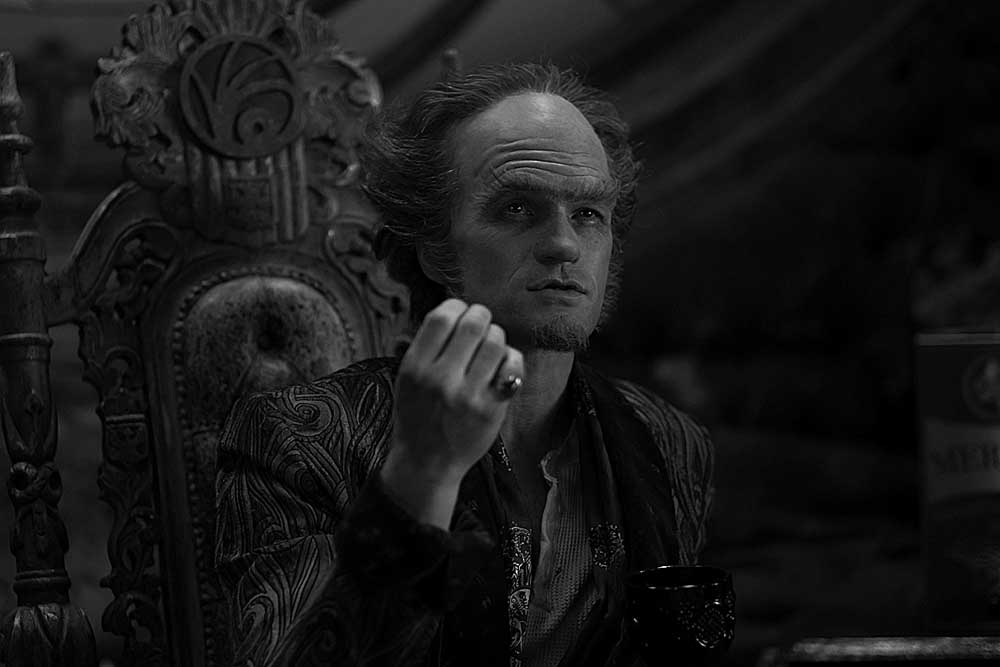Netflix reinvents ‘A Series of Unfortunate Events’
Published 12:48 pm Thursday, January 19, 2017

- Neil Patrick Harris plays the evil Count Olaf in “A Series of Unfortunate Events.” (Joe Lederer/Netflix)
In Netflix’s new adaptation of the best-selling “A Series of Unfortunate Events” books, the character of Mr. Poe, a hapless banker, has floor-to-ceiling filing cabinets obscuring every inch of his office walls and an enormous vault looming behind his desk.
“Mr. Poe’s bank looks like what you picture a bank looking like when you’re 8, and someone’s father works at a bank,” said Daniel Handler, 46, the author of the books and an executive producer on the series, which began streaming Friday. “It doesn’t look like a bank; it looks like what you imagine.”
That concept — a cartoonish visual approximation of youthful imagination, perception and memory — is the closest thing to a defining aesthetic you can find in a series that lacks any firm sense of time or geography.
In that regard, it mimics the source material, which chronicles the outlandish misfortunes endured by three newly orphaned children, Violet, Klaus and Sunny Baudelaire.
Many aspects of the books were left “purposefully vague,” Handler said, “in order for young readers to fill in the blanks themselves.” (He wrote the series under the name, and in the persona, of Lemony Snicket, a mysterious researcher.)
This tactic encourages young imaginations to flourish.
“I’ve been all over the world, talking about these books, and I’ve seen drawings and school plays and radio shows and all these tiny little adaptations — tiny in terms of audience,” Handler said in a telephone interview.
But it has also meant that when it comes time to design a larger adaptation — for a much larger audience — the producers have some decisions to make.
The rules of a made-up world
Members of the television series’ creative team, which included Barry Sonnenfeld, an executive producer and the director of four of the eight episodes, began by asking themselves some questions about the world they were creating.
“Are there cellphones? Are there computers? What year does it take place? Are they in America?” Sonnenfeld said in a telephone interview. “It’s sort of its own place and its own time.”
So what’s in? British cars from the ’40s, as are 1970s Oldsmobile Toronados. Trolleys and early-’60s walkie-talkies are, too, but so is the new Fiat 500. The mishmash is of a piece with the world of the books, in which horse-drawn carriages and motorcycles share the same cobblestone streets; urgent messages are relayed via telegram; a “hot-air mobile home” provides for a quick getaway and — most fantastical of all — newspapering is portrayed as a robust, if unsavory, trade.
Sonnenfeld enlisted Bo Welch, a longtime collaborator who also directed “The Cat in the Hat” and was the production designer on “Edward Scissorhands.” Echoes of that film’s picture of suburbia, which Handler described as “familiar but completely imaginary,” crop up in “A Series of Unfortunate Events.”
In one shot, for instance, panning from the home of a kindly neighbor to that of the brooding, malevolent Count Olaf (Neil Patrick Harris), “the camera moves across the street, and the architecture is entirely different,” Handler said. “The lighting is entirely different, the weather is entirely different: That’s kind of what you remember, even though, if you went back and checked, that might not be what it looked like.”
As they built the world of the show on a Vancouver soundstage, Sonnenfeld and Welch injected nearly every element with “a slight bit of artifice,” Sonnenfeld said, and they often did it the old-fashioned way. The production eschewed green screens in many places where they might have been expected, even using 200 feet of painted canvas as a stand-in for the sky.
Reclaiming the story
In its pacing as well as its look, the Netflix show is a departure from the last high-profile Lemony Snicket adaptation, a 2004 film starring Jim Carrey as Olaf, and Meryl Streep as the orphans’ phobic Aunt Josephine. Sonnenfeld and Handler were both fired from that movie, though Handler was brought back late in production to offer his thoughts, a gig he didn’t relish.
“They called me in a little bit at the end, as a consultant, which was extremely difficult for me because there were a gazillion things I would have done differently and that were all too late to do anything differently about,” he said. “So when Netflix first approached me, I said, ‘We can talk about any range of roles that I will be doing, but what I won’t be doing is coming in at the last minute as a consultant.’”
Instead of compressing the action of three books into one 108-minute movie, as the 2004 film did, each of the first four books’ plots unspools over the course of two episodes. The result, Handler said, comes closer to approximating the cadence of serialized melodramas like “The Perils of Pauline,” to which his series owes a debt.
“It probably should’ve always been a television series,” Sonnenfeld said.






